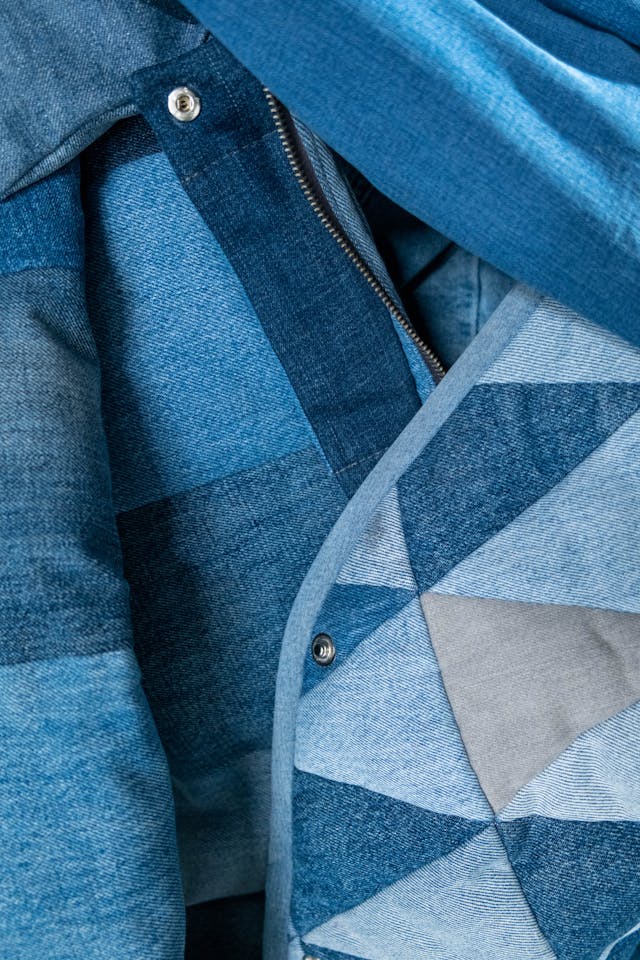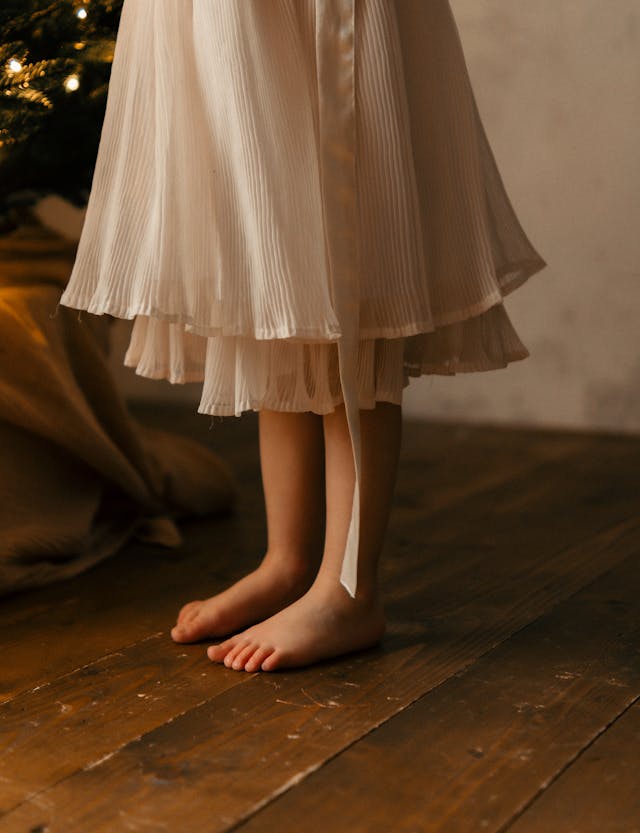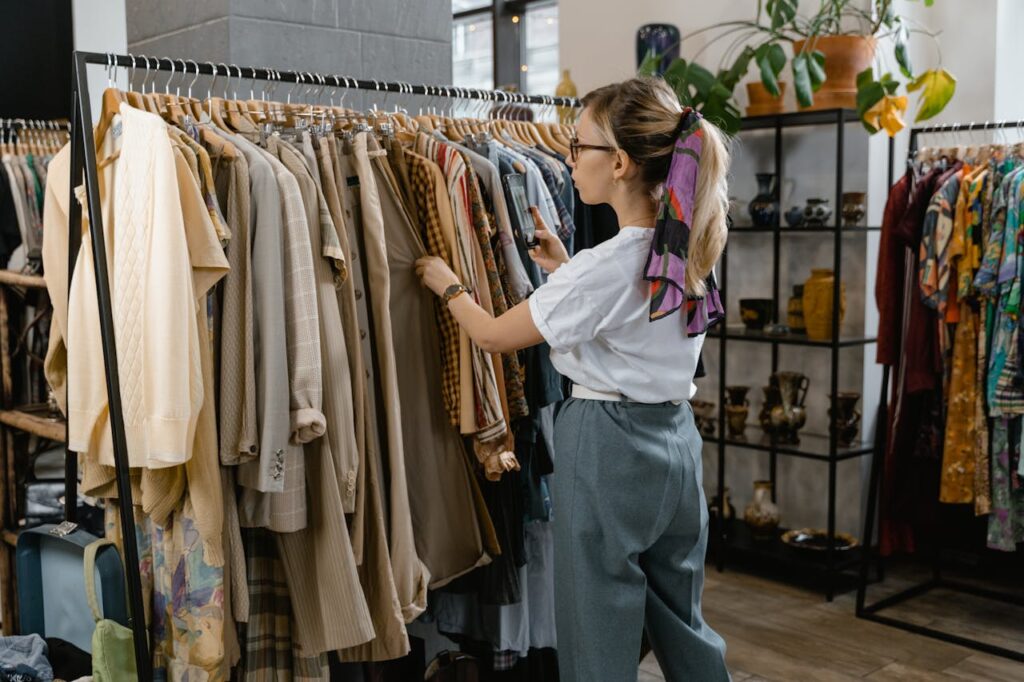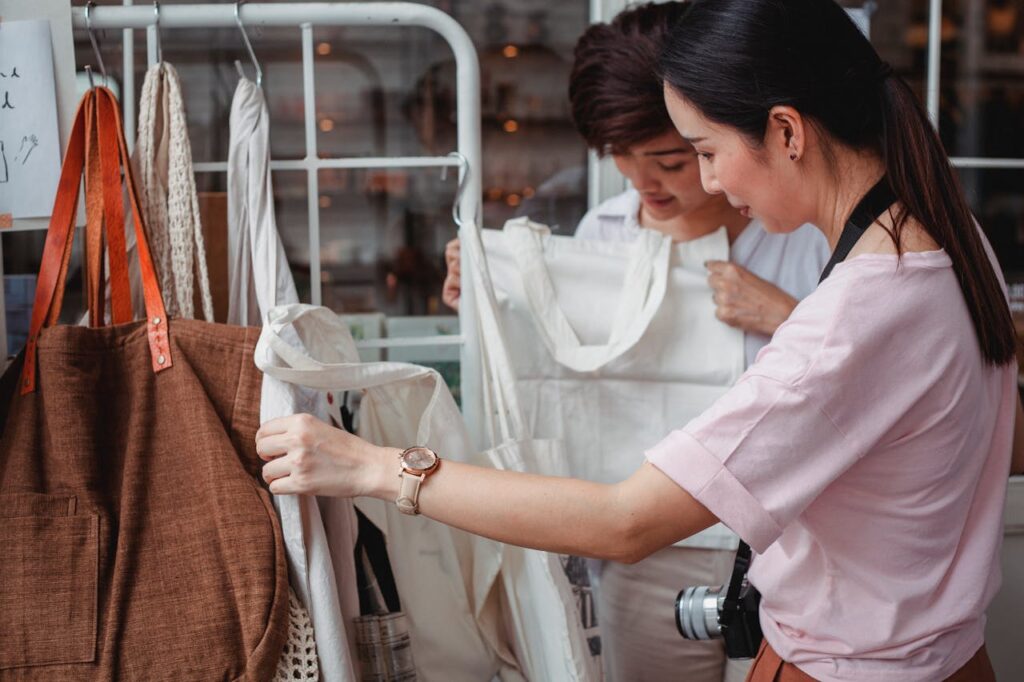10 Ways to Spot Authentic Vintage Clothing
If you’re a vintage clothing enthusiast, knowing how to identify authentic pieces is essential. Whether you’re hunting for unique treasures or adding to your collection, certain details can help you distinguish genuine vintage items from modern reproductions. From fabric quality to stitching techniques, there are key signs that set vintage clothing apart. This guide will help you spot the real deal with confidence, so you can make informed choices when shopping for timeless fashion.
This post may contain affiliate links, which helps keep this content free. Please read our disclosure for more info.
Examine the Fabric Quality

When looking for authentic vintage clothing, pay close attention to the fabric used. Older garments typically feature high-quality, natural fabrics like wool, cotton, silk, and linen, which have a distinct texture compared to the synthetic materials commonly used in today’s fashion. For example, wool in vintage pieces often feels thicker and warmer, while silk will have a smooth, almost luxurious sheen. These fabrics were chosen for their durability and timeless appeal, unlike many modern synthetics that are mass-produced and often have a lightweight or artificial feel.
In addition to the material, authentic vintage clothing often displays subtle signs of wear, such as slight fading or softening of the fabric. This natural aging process is a good indicator of authenticity, as vintage clothes were typically worn and loved over time. If the fabric feels lightweight or too smooth, it could be a sign of a modern reproduction, as manufacturers today often use cheaper and thinner textiles.
Check the Label

Labels can be one of the most revealing aspects of authentic vintage clothing. Vintage clothing labels often have unique fonts, colors, and designs that are not commonly found in modern garments. They can also provide valuable clues about the garment’s era. For instance, if you find a garment with a label that has a care instruction in French, Spanish, or Italian, or one that includes specific country-of-origin details, you may be dealing with a true vintage item. Many vintage labels were often large and featured ornate designs, especially for luxury brands.
Additionally, older clothing labels were sometimes made from fabric or paper-like materials, which differ from today’s more durable and smaller tags. The older styles of clothing often featured a more detailed description of the garment’s origins, and some even included the designer’s name or small symbols indicative of the brand’s history. If the label seems overly simplified or lacks these details, it may be a modern reproduction.
Look for Hand-Stitched Details

Before mass production took over, many clothing items were hand-stitched, and these hand-sewn garments can be a dead giveaway of their vintage authenticity. If you closely examine the internal stitching of a garment, you might notice subtle imperfections, like uneven stitching or slight irregularities in the seam. These characteristics are typical of hand-sewn clothes from the past, as they were often crafted with individual care, rather than the uniformity seen in modern mass-produced items.
In contrast, modern clothing is almost entirely machine-stitched, meaning the seams are typically much more uniform and precise. If you come across a piece that seems to have slightly imperfect stitching but feels well-made, it is likely a vintage item from before the 1960s, when machine sewing became widespread. These small details can make a big difference in spotting authentic vintage pieces, especially if you are unfamiliar with the construction techniques of past decades.
Inspect Zippers and Fasteners

Vintage clothing often features unique zippers and fasteners that are no longer in use today. For example, older garments might have metal zippers with a small, intricate design or unique pull tabs that you won’t see on modern clothes. These zippers were often manufactured by brands like Talon or Crown, which were popular in the mid-20th century. The smoothness and durability of metal zippers in vintage pieces are also noticeable; if you find a zipper that still works smoothly after decades of use, it speaks to the quality of the original garment.
Similarly, other fasteners like buttons or snaps were made with care, often using unique materials such as bakelite, glass, or metal, which were popular in the early to mid-1900s. Today, plastic buttons are often used, making vintage clothing fasteners an easy giveaway. Inspecting these details can help you determine the authenticity of a piece. If the buttons or zippers look modern or are too uniform in design, it’s likely the garment is a reproduction.
Pay Attention to the Cut and Fit

Vintage clothing tends to have distinct cuts and fits that reflect the fashion trends of its time. For example, garments from the 1950s typically feature an hourglass silhouette, with narrow waists and full skirts for women. Men’s suits from the same era often had broader shoulders and a slightly shorter cut. Older garments may also have slightly different sizing conventions, so be sure to pay attention to the fit. Vintage clothing often runs smaller than modern sizing, and the way the clothing is shaped can give you a good indication of its age.
Additionally, the way a vintage piece is cut and draped can tell you a lot about its quality. Older clothing items often used darts and pleats for shaping, while modern garments often rely on stretch fabrics or simple seams. These classic construction techniques are hallmarks of vintage design and are much more intricate compared to the mass-produced items we see today.
Look for Wear Patterns

Wear patterns are subtle signs that can help you identify vintage clothing. Over the years, clothing naturally develops wear from regular use, and vintage pieces are no exception. Look for signs of aging in areas that typically experience more friction, such as underarms, elbows, and collar edges. These wear marks can range from slight fading to more significant signs of distress, but they all point to the garment being worn and loved over time.
It’s important to note that wear patterns on modern reproductions are often artificial. Manufacturers sometimes artificially distress garments to make them appear vintage, but these signs will often look too uniform or exaggerated. Authentic wear patterns are irregular and reflect the natural use of the item, making them an easy indicator of genuine vintage clothing.
Examine the Hemline

The hemline of a vintage garment can also help you spot its authenticity. Historically, clothing was often hemmed by hand or with less precise machines, meaning the hemlines on vintage items may not be as uniform as they are today. In particular, the hem of a vintage skirt or dress may have a slightly uneven or hand-stitched finish that can be hard to replicate in modern mass production.
Another important point is the height of the hemline, which can give clues to the garment’s age. For example, skirts and dresses in the 1950s tended to be longer, often mid-calf or ankle-length, while the 1960s brought shorter hems to the forefront. The style and length of a hemline can give you clues as to which era the garment originates from, making it an important feature to consider.
Check the Color and Dyeing Process

Vintage clothing often has a distinct color and pattern that is hard to replicate with modern dyes. Many older garments were dyed using natural methods that can cause colors to fade or shift over time. For example, you may notice that some older garments have a more muted or even uneven color, a result of the natural dyeing process used back in the day. These small imperfections are typical of vintage clothing and indicate that the item was made with a traditional dyeing process.
Furthermore, vintage garments often feature patterns that were more labor-intensive to produce, such as hand-painted or hand-printed designs. These prints are often more intricate and can have slight inconsistencies, which modern mass-produced prints tend to avoid. If a garment’s print is particularly detailed and unique, it may point to the item’s vintage nature.
Look for Specific Brand or Designer Markings

Certain brands or designers left unique markings on their clothing, which can help you identify authentic vintage pieces. For instance, high-end designers like Chanel, Dior, or Yves Saint Laurent typically stamped their garments with distinctive labels or made certain design choices that are recognizable by vintage collectors. Checking for these brand markings is a good way to determine whether a garment is authentic or a replica.
Additionally, some brands left unique symbols or patterns within the fabric itself, such as a certain type of stitch or emblem woven into the material. These subtle, often overlooked details can be the key to identifying a genuine vintage item. If the garment is from a well-known designer or luxury brand, examining these markings carefully can help confirm its authenticity.
Assess the Overall Construction

Authentic vintage clothing is often made with more care and attention to detail compared to modern mass-produced garments. When examining a piece, take note of the overall construction, including the stitching, lining, and finish of the garment. Vintage items often feature well-constructed linings, more seams for shaping, and additional details like pleats or darts that were designed to help the garment fit better and last longer.
Modern garments, by contrast, often use less fabric or simpler designs to save on production costs. If you notice that a piece is heavily lined or features high-quality, intricate construction techniques, it is likely vintage. The extra effort put into construction often leads to a longer-lasting piece, which is why vintage clothing can be so durable.
This article originally appeared on Avocadu.
